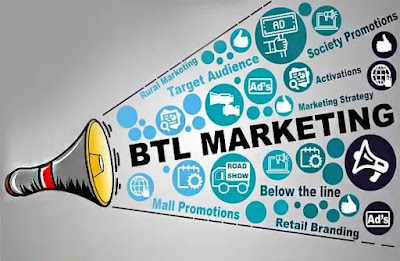Understanding Below-the-Line Marketing for Better Awareness!
Acquiring knowledge of below-the-line advertising.
Below-the-line advertising aims to speak to consumers directly. A below-the-line campaign might instead highlight an in-store demonstration of a product, which customers may want to check out in person, rather than airing a national commercial during a popular network television show. This makes a higher level of customer interaction possible, where a salesperson can respond to direct inquiries and provide more precise product explanations. Types of btl marketing advertising include the following examples:
Personalized online marketing.
Companies can target particular demographics in their advertising campaigns, such as a consumer's age or the business's industry. For instance, LinkedIn enables advertisers to target specific individuals with sidebar advertisements based on their occupations or the groups to which they belong.
Postal advertising.
Companies continue to use direct mail advertising, particularly for the older demographics less likely than the younger generations to be online. Postcard mailings and catalogs are still common and valuable marketing strategies.
Presentations at trade shows.
Businesses frequently advertise their goods and services via the regional Chambers of Commerce. To attract new loan customers, banks hold mortgage seminars where experts provide information on mortgages, interest rates, and home affordability.
There are always better marketing strategies that always succeed. Instead, businesses frequently employ a variety of tactics. As an illustration, a company might mail out flyers to promote an upcoming event it is hosting at the neighborhood convention center.
Below-the-Line vs. Above-the-Line.
Advertising that appears above the fold targets broad demographics.
A game television commercial is the pinnacle of above-the-line marketing because it can instantly reach tens of millions of customers worldwide for only a few seconds' worth of airtime while costing millions of dollars. However, statistically speaking, a sizeable portion of those viewers might not accurately represent a company's target market.
In contrast, below-the-line advertising targets a more limited audience but reaches a more significant number of people. Below-the-line advertisers typically carry out intensive market research at first to pinpoint a target market of consumers more likely to buy the products. Types of btl marketing advertising reach consumers more individually and directly once the target demographic has been established.
In contrast to below-the-line marketing, which employs a metaphorical fishing pole through direct mail, in-person interactions at trade shows, or paid search engine results that appear when users enter particular queries, above-the-line marketing casts a wide net.
Since a below-the-line campaign is less expensive and easier to track, its return on investment (ROI) may be higher than one above the line.
The benefits of below-the-line advertising.
The most significant benefit of below-the-line advertising is lower costs. While TV and radio advertisements are frequently expensive, direct mail and search engine marketing are significantly less costly. Additionally, scaling up or down below-the-line methods is less expensive and more accessible.
Additionally, it is simpler to track conversions with intended customers when using below-the-line techniques. As an illustration, despite numerous methods for determining how effective TV and radio advertisements are, deciding on their significance can take time and effort. People occasionally need to remember their experiences, so asking customers how they heard about a business, for instance, can produce unreliable answers. However, to give companies more precise information, email and search engine marketing carefully track the links customers click.
Better customer engagement is fostered by below-the-line marketing, which is essential in today's contemporary business environment.



Comments
Post a Comment